The Role of Conveyors in Streamlining Workplace Operations
Date Posted:8 November 2024
By automating the movement of materials, conveyors allow businesses to streamline their workflows, reduce manual labour, and improve accuracy.
Conveyors have long been a cornerstone in material handling systems, playing a vital role in streamlining workplace operations across industries. From manufacturing plants to distribution centres, conveyors are essential for moving products efficiently, reducing manual labour, and enhancing safety. Choosing the right conveyor system can significantly improve productivity and help a business maintain smooth and continuous workflows. This blog delves into the essential role conveyors play in modern workplaces and how they contribute to operational efficiency.
Enhancing Workflow Efficiency
One of the primary benefits of conveyor systems is their ability to enhance workflow efficiency. In industries where speed and precision are critical, conveyors allow goods to be transported quickly from one area to another without the need for human intervention. This automation not only saves time but also ensures that the workflow remains consistent, with minimal delays caused by manual handling.
1. Reduced Manual Labour
In warehouses, factories, and distribution centres, manual handling of materials can be time-consuming and physically demanding. Conveyors take on the heavy lifting, freeing up employees to focus on other, more specialised tasks. This reduces the physical strain on workers, minimising the risk of injury while also increasing overall output.
2. Improved Accuracy and Precision
Automated conveyors ensure that products are moved with precision, reducing the chance of human error. For example, in packaging lines, conveyors ensure that each item is placed and moved in a controlled manner, reducing the likelihood of damage or mishandling. This precision is especially important in industries such as electronics, pharmaceuticals, and food
production, where consistent quality and accurate handling are paramount.
Types of Conveyor Systems
There are various types of conveyor systems designed to meet the specific needs of different industries. Understanding the right type for your operations is crucial to ensuring seamless integration and optimal performance.
1. Belt Conveyors
Belt conveyors are among the most common types of conveyor systems. They consist of a continuous belt that moves over rollers, making them ideal for transporting items of various shapes and sizes. Belt conveyors are widely used in industries like retail, food production, and distribution, where speed and gentle handling are required.
2. Roller Conveyors
Roller conveyors use cylindrical rollers to transport items along a fixed path. These systems can be either powered or gravity-fed, depending on the need. Roller conveyors are ideal for moving heavy or bulky goods and are commonly used in warehouses and manufacturing facilities.
3. Pallet Conveyors
Pallet conveyors are designed specifically for the movement of pallets and are essential for industries dealing with heavy or oversized loads. These systems are robust and built to handle the weight and size of pallets, making them ideal for warehouses, distribution centres, and large-scale production facilities.
4. Overhead Conveyors
Overhead conveyors transport materials above ground, freeing up valuable floor space. These systems are widely used in automotive assembly lines, garment manufacturing, and other industries that require space-saving solutions.
Safety Benefits of Conveyor Systems
Conveyors not only enhance efficiency but also contribute to a safer workplace. Manual handling of materials can lead to injuries, including strains, sprains, and falls, especially when dealing with heavy or awkwardly shaped items. By reducing the need for manual lifting, conveyors minimise the risk of these injuries and create a safer environment for workers.
1. Minimising Human Error
By automating material movement, conveyors reduce the likelihood of human error, such as dropping or misplacing items. This is particularly important in environments where high-value or fragile goods are handled. For instance, in pharmaceutical or food processing plants, conveyors ensure that products move through the system without contamination or damage, enhancing both safety and quality control.
2. Improved Ergonomics
Workers who handle materials manually are at risk of repetitive strain injuries and long-term musculoskeletal problems. Conveyor systems reduce the physical demand on workers, improving ergonomics by limiting the need for repetitive bending, lifting, and carrying. This leads to a healthier, more comfortable workforce and lowers the incidence of workplace injuries.
3. Integrated Safety Features
Many conveyor systems come equipped with built-in safety features such as emergency stop buttons, guardrails, and sensors. These features help prevent accidents by detecting objects or people in the path of the conveyor and stopping the system before an incident occurs.
Customisation and Scalability
Conveyor systems are highly customisable to meet the specific needs of any workplace. From simple belt conveyors to complex systems with multiple types of conveyors integrated together, businesses can design their conveyor solution to match their operational requirements.
1. Modular Design
Modular conveyors allow businesses to expand or reconfigure their system as needed. This scalability is particularly beneficial for growing businesses or those that experience seasonal fluctuations in demand. With a modular conveyor system, companies can easily add new sections or remove existing ones, ensuring the system evolves with their changing needs.
2. Tailored Solutions
Conveyors can be tailored to meet unique operational requirements. For example, businesses can opt for custom widths, lengths, and conveyor speeds to suit their specific product types and workflows. In food production, conveyors can be designed with stainless steel materials to comply with hygiene standards, while in hazardous environments, explosion-proof conveyors can be installed for added safety.
Cost-Effective Material Handling
While the initial investment in a conveyor system can be significant, the long-term cost savings are considerable. Conveyors reduce the need for manual labour, minimise the risk of workplace injuries, and enhance overall productivity, which can lead to lower operational costs over time.
1. Increased Throughput
By automating the movement of goods, conveyors increase throughput, allowing businesses to process and ship orders more quickly. This increased efficiency can lead to higher revenues and improved customer satisfaction, particularly in industries where speed is crucial, such as e-commerce and logistics.
2. Reduced Downtime
Conveyors reduce the likelihood of human-caused delays or errors, keeping operations running smoothly. When integrated with other automated systems, such as sorting and packing equipment, conveyors create a seamless workflow that reduces downtime and improves overall efficiency.
Conveyors are an essential component of modern workplace operations, offering a range of benefits from increased efficiency to enhanced safety. By automating the movement of materials, conveyors allow businesses to streamline their workflows, reduce manual labour, and improve accuracy. With various types of conveyor systems available, businesses can choose the solution that best fits their needs, ensuring a safe and efficient workplace.
At Verdex, we offer a wide range of conveyor systems designed to meet the needs of different industries. Whether you require a basic belt conveyor or a customised pallet conveyor system, our solutions are built to enhance productivity and safety in your operations. Explore our conveyor systems today and discover how we can help you optimise your material handling processes.





























































































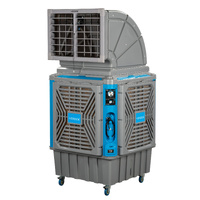

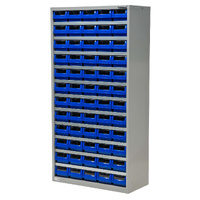
































 Trolleys & Hand Trucks
Trolleys & Hand Trucks Cage Trolleys
Cage Trolleys Cleaning Carts & Trolleys
Cleaning Carts & Trolleys Construction Trolleys
Construction Trolleys Custom Trolleys
Custom Trolleys Hand Trucks & Dollies
Hand Trucks & Dollies Laundry/Linen Trolleys
Laundry/Linen Trolleys Lifting Trolleys
Lifting Trolleys Order Picking Trolleys
Order Picking Trolleys Panel Cart Trolleys
Panel Cart Trolleys Platform Trolleys
Platform Trolleys Powered Trolleys
Powered Trolleys Shelf & Tiered Trolleys
Shelf & Tiered Trolleys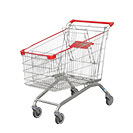 Shopping Trolleys
Shopping Trolleys Stainless Steel Trolleys
Stainless Steel Trolleys Tool Trolleys
Tool Trolleys Utility & Service Carts
Utility & Service Carts Lifting & Handling Equipment
Lifting & Handling Equipment Forklift Attachments
Forklift Attachments Jib Attachments
Jib Attachments Lifting Hoists & Pallet Hooks
Lifting Hoists & Pallet Hooks Load Skates & Tow Tugs
Load Skates & Tow Tugs Manual Stackers & Lifters
Manual Stackers & Lifters Pallet Jacks
Pallet Jacks Pallet Lifters
Pallet Lifters Pallet Rotators & Dispenser
Pallet Rotators & Dispenser Powered Pallet Trucks & Electric Lifters
Powered Pallet Trucks & Electric Lifters Scissor Lift Trolleys and Tables
Scissor Lift Trolleys and Tables Conveyor Equipment
Conveyor Equipment Conveyor Frames & Stands
Conveyor Frames & Stands Roller & Skate Conveyors
Roller & Skate Conveyors Ladders & Access Equipment
Ladders & Access Equipment Container & Yard Ramps
Container & Yard Ramps Ladders & Step Stools
Ladders & Step Stools Work Platforms & Crane Cages
Work Platforms & Crane Cages Drum Handling Equipment
Drum Handling Equipment Drum Storage & Bunding
Drum Storage & Bunding Drum Trolleys & Lifters
Drum Trolleys & Lifters Forklift Drum Handling
Forklift Drum Handling Waste Handling & Bins
Waste Handling & Bins Bin Lifters & Tippers
Bin Lifters & Tippers Plastic Waste & Wheelie Bins
Plastic Waste & Wheelie Bins Steel Waste & Tipping Bins
Steel Waste & Tipping Bins Waste Carts
Waste Carts Dangerous Goods Storage & Spillage
Dangerous Goods Storage & Spillage Aerosol Cans Storage Cages
Aerosol Cans Storage Cages Bunded Pallets & Storage
Bunded Pallets & Storage Corrosive Goods Storage Cabinets
Corrosive Goods Storage Cabinets DG Storage & Trolleys
DG Storage & Trolleys Flammable Liquid Cabinets
Flammable Liquid Cabinets Forklift Gas Storage Cages
Forklift Gas Storage Cages Site Storage
Site Storage Spill Kits
Spill Kits Shelving & Storage Equipment
Shelving & Storage Equipment Stillage & Transport Cages
Stillage & Transport Cages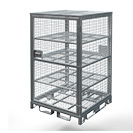 750 Series Cage Configurations
750 Series Cage Configurations Heavy Duty Cabinets
Heavy Duty Cabinets Heavy Duty Shelving
Heavy Duty Shelving Mega Bins & Pallets
Mega Bins & Pallets Packing & Workbenches
Packing & Workbenches Parts Trays & Stor-Pak Bins
Parts Trays & Stor-Pak Bins Pegboard & Louvre Panels
Pegboard & Louvre Panels Plastic Bins & Crates
Plastic Bins & Crates Plastic Handling Solutions Bins
Plastic Handling Solutions Bins Plastic Pallets
Plastic Pallets Stack & Nest Bins
Stack & Nest Bins Pallet Racking Accessories
Pallet Racking Accessories Workplace Equipment
Workplace Equipment Modular Workbenches
Modular Workbenches Electric Height-Adjustable Workbenches
Electric Height-Adjustable Workbenches Floor Matting
Floor Matting General Workplace Equipment
General Workplace Equipment Industrial Weighing Scales
Industrial Weighing Scales Packaging Machinery
Packaging Machinery Stationery Cupboards
Stationery Cupboards Storage and Stillage Cages
Storage and Stillage Cages Tool Trolleys
Tool Trolleys Tooling Cabinets
Tooling Cabinets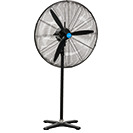 Workshop Fans and Coolers
Workshop Fans and Coolers Safety Barriers, PPE & Signage
Safety Barriers, PPE & Signage Barriers & Bollards
Barriers & Bollards First Aid Equipment
First Aid Equipment Gloves, Knives and PPE
Gloves, Knives and PPE Signage
Signage Cleaning & Site Supplies
Cleaning & Site Supplies Cleaning Equipment
Cleaning Equipment Cleaning Trolleys
Cleaning Trolleys Rubbish Bins
Rubbish Bins Signs & Traffic Supplies
Signs & Traffic Supplies Construction Equipment
Construction Equipment Construction Trolleys
Construction Trolleys Waste Handling
Waste Handling General Site Equipment
General Site Equipment Concrete Equipment
Concrete Equipment Site Storage
Site Storage Lifting Equipment
Lifting Equipment Verdex Specials
Verdex Specials









